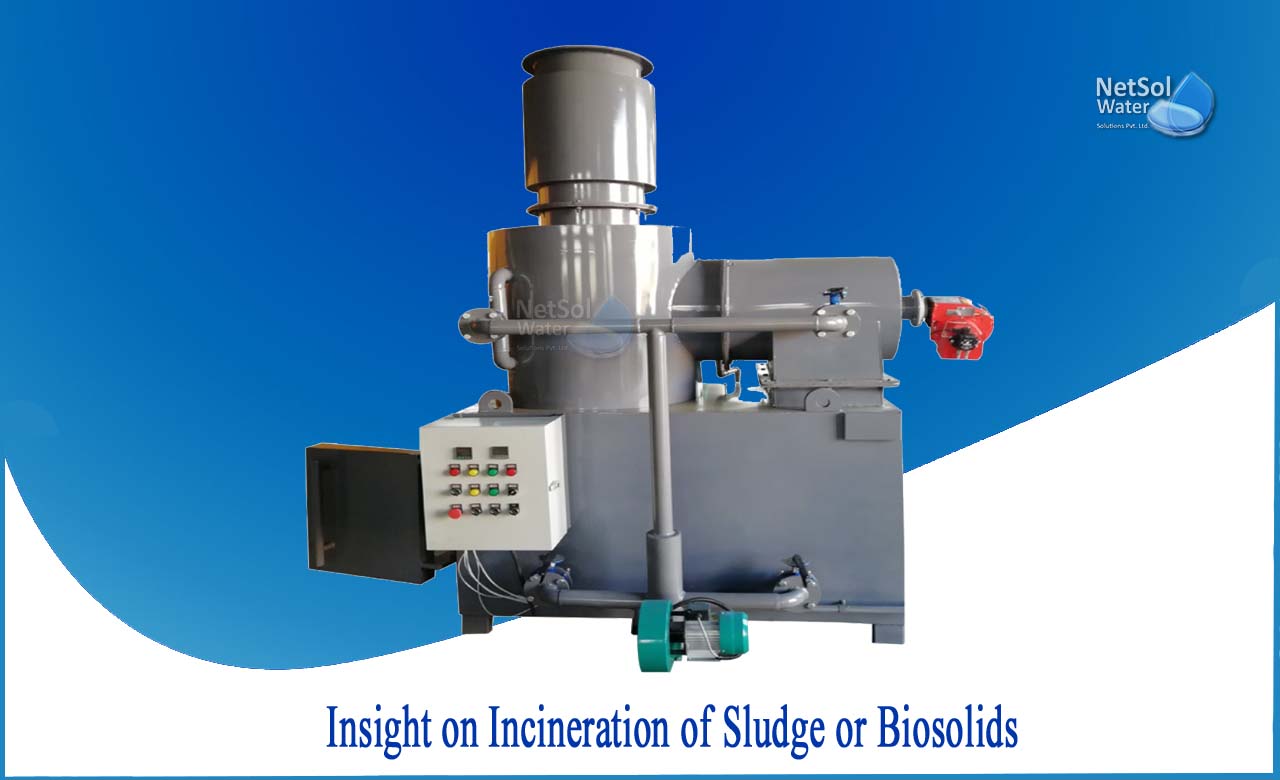What is sludge Incineration?
The full annihilation of biosolids by heat is referred to as biosolids incineration. It isn't truly a disposal method, but rather a volume reduction to ash. Incinerating biosolids is not only a useful process; it also yields biosolids ash, which may be reused.
Biosolids incineration has numerous clear benefits over alternative biosolids treatment solutions (particularly land filling or lagoons).
When compared to lagoons or land burial, it significantly reduces the space required for sludge management, reduces biosolids volume and weight, and eliminates transportation expenses when sludge is incinerated on-site.
The solids content of the sludge is an important factor incineration. Sludge must be dewatered (typically by centrifuge) before incineration because, despite its high heat value, excessive water content burns auxiliary fuel to sustain incinerator combustion.
Process involved_
The waste is incinerated using a grate system that combusts the unrefined and unprocessed waste. Hydraulic rams are installed in the boilers, which load the waste into an ignition cubicle. The grate approach ensures that waste enters the burning chamber in a controlled manner. The waste is dried to make it more volatile, and it is then burnt on the abrade to produce the by-product ash. The flue gases from the furnaces are then transferred to be converted into steam for energy recovery.
Steam is produced by combustion plants from 850°C hot flue gases emitted from the furnace. This hot steam is sent to the district for use as heating or power, or it is used to run the plant on site or for industrial purposes.
In practice, a broad range of grates, including forward reciprocating, reverse reciprocating, roller system, and horizontal pattern, may be seen. The final cleared gases are discharged into the environment via chimneys after passing through an air pollution control system that detoxifies contaminants such as nitrogen, heavy metals, dioxins, and furans, among others.
Solid by-products from the incineration process, such as bottom ash and fly ash, can be further treated to remove pollutants before being used for road construction or diverted to landfills.
The fluidized-bed system, which is based on the conversion of solids to liquid form in the presence of air, is another aspect of incineration. Sewage sludge, organic constituents, and solid waste are examples of waste that can be used. The fluidized-bed system's furnaces are made up of rectangular or cylindrical heating grids that efficiently burn waste of minute particle size in the fluidized sand berth.
The fluidized-bed systems has advantages over the grate method in that it operates with a smaller floor surface and takes up less space. For effective waste to fuel conversion, fluidized-bed systems include a bubbling type, circulating reactor, and rotating activator.
Conclusion
The incineration process has progressed throughout time. Figure below depicts the essential steps of a typical sewage sludge incineration process, which are organized into four sections: Sludge pretreatment, combustion, energy recovery, and cleaning systems.
Netsol Water is Greater Noida-based leading water & wastewater treatment plant manufacturer. We are industry's most demanding company based on client review and work quality. We are known as best commercial RO plant manufacturers, industrial RO plant manufacturer, sewage treatment plant manufacturer, Water Softener Plant Manufacturers and effluent treatment plant manufacturers. Apart from this 24x7 customer support is our USP. Call on +91-9650608473, or write us at enquiry@netsolwater.com for any support, inquiry or product-purchase related query.



